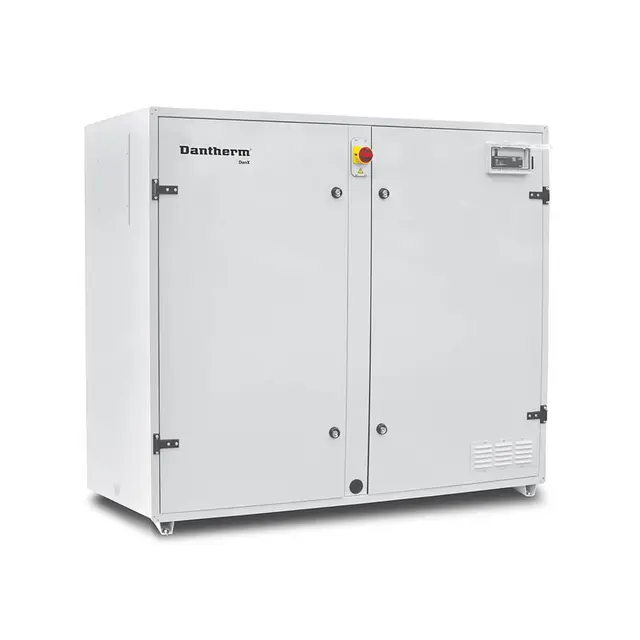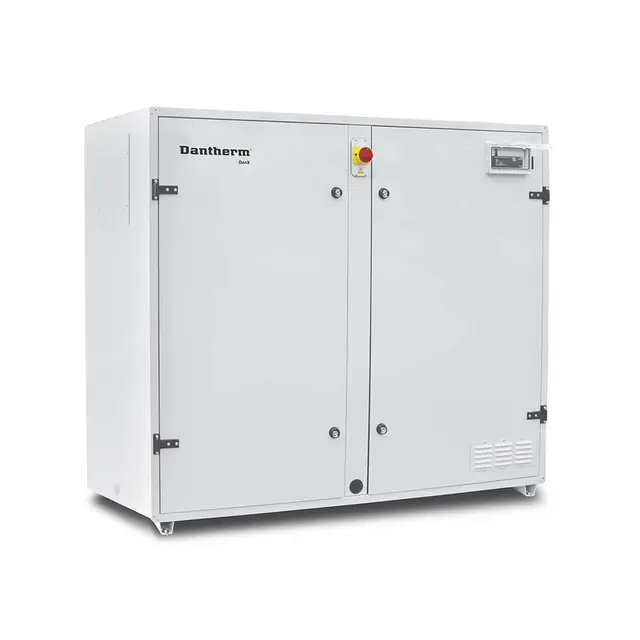6 must-know factors to install effective air handling units in public swimming pools
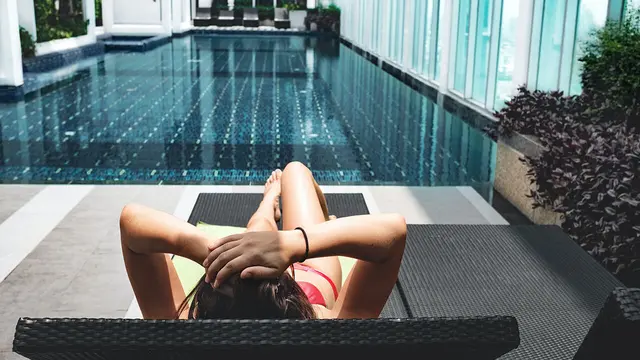
- Home
- Insights
- Humidity control and drying insights
- 6 must-know factors to install effective air handling units in public swimming pools
A suitable air handling unit in a swimming pool setting needs to accomplish several things. Ensuring the comfort and wellbeing of swimmers and employees. Preserving the structure of the building. Keeping energy consumption to a minimum. Here, we outline what factors influence the right solution for your specific circumstances.
If you are preparing to install an air handling unit or comparable climate control solution within your swimming pool, or are replacing your existing system, finding the appropriate fit for your environment takes more than gut feeling. It must be a calculated approach – one that takes into account the numerous factors that influence the climate and air quality in pool halls.
With hundreds of installations every year across Europe, our team at Dantherm Group understands better than most what to be aware of to maintain ideal humidity and air quality levels in these demanding environments.
Here, we highlight six crucial elements that need to be considered as part of choosing the right air handling solution for your unique needs.
1. Temperature and climate outside the pool
Across Europe and globally, there are significant variations in outdoor temperatures and climates. This will fluctuate based on the time of day and seasons, as well as where your swimming pool is positioned – buildings surrounded by lower outdoor temperatures will have substantially less water content than in hotter, humid environments for example.
This naturally influences the state of the air inside the pool hall. The location of your site and the climate surrounding it will lead to substantial variations in your hall’s dehumidification requirements.
For instance, during winter the air is drier, which will influence the fresh air intake from your air handling system. The winter months in Scandinavia can see humidity drop to as low as 30% – significantly lower than in other European countries. Conversely, during the summer in Spain for example, the humidity will be far higher than in other areas. This needs to be accounted for by your air handling unit.
In addition, low relative humidity in the pool room will also result in higher evaporation and, consequently, greater energy consumption from your unit to handle this increased moisture in the air.
So, although you can’t directly influence temperature and humidity around your pool hall, you need to consider this in determining your ideal swimming pool climate control solution. A low outdoor air temperature will favour a ventilation solution with a heat pump, for example.
2. The thermal transmittance of your building
For older, more established swimming pool halls, their thermal transmittance rating (or U-value) will be poorer than a modern pool. The U-value represents the rate of the transfer of heat through a structure, divided by the difference in temperature across that structure.
This means that the lower your building’s U-value, the more air will need to be moved around the hall to maintain the required humidity, temperature and air quality levels. Without this, condensation can begin to form on the surfaces most exposed to the colder outdoor temperatures, such as windows, doors and glass surfaces.
Conversely, if too much air is moved across the surface of your pool in relation to its U-value, this will boost evaporation and grow your energy costs. Similarly, if glass temperatures are raised too high as a result of the air being directed to them, this will lead to further unnecessary energy loss.
Therefore, your swimming pool air handling unit must control the airflow around the pool hall in a way that prevents the likelihood of stagnant air, which can quickly form condensation and create a breeding ground for mould and corrosion, but limit the amount of evaporation to prevent your energy costs spiralling – a difficult balance to find without expert advice…
3. Likely hotspots for condensation
Imagine a swimming pool hall temperature of around 30ºC with relative humidity (RH) of around 55%. In these conditions, the dew point is approximately 21ºC, meaning condensation will form at that temperature. So, when installing your Dantherm air handling solution, you need to account for the areas will be most vulnerable to this condensation:
Outdoor-facing doors
Windows
Glass surfaces
This is not only applicable to directly in the pool hall – if your ventilation system overflows from the shower area of the pool into the pool hall, you also need to be wary of the risk of condensation forming on the cold pipes of sinks, toilets and more, which can cause them to corrode over time.
Finally, it is important to consider the impact condensation can have on the fresh air and exhaust ducts of your air handling unit. If the temperature of your technical room is much warmer than the outdoor temperatures these units gather their fresh air from, if the RH is not controlled effectively, hot, moist air can infiltrate the ducts.
If this happens, the costs of running the ducts can spiral and the damage done to them can require frequent, costly maintenance and repairs. It is therefore crucial that negative pressure (one where the air is kept in the room rather than pushed out of it) is maintained so up to 100% RH exhaust air remains in the exhaust duct, with no threat of it condensing.
4. Air volume and distribution
Blowing air across the exposed surfaces in your pool hall prevents the pockets of stagnant air from forming that can lead to condensation. It is not often necessary to install ducts with ‘dry air’ from your air handling unit to these points – they can typically be handled by circulating the air within the room through these areas.
Your air handling system should also be capable of exchanging the volume of air within the pool hall 4-8 times over, to maintain the best possible air quality. However, it will depend on the size and scale of your pool hall and the number of people using it to determine how many times specifically the air should change in order to provide the best conditions for swimmers and employees.
For instance, an indoor water park with high ceilings, especially in poor condition, will need to have air change constantly monitored to avoid the development of thermal bridges, which can:
Increase the potential for condensation forming
Cause you to spend more energy to account for heat losses
Create an uncomfortable atmosphere for pool users
Another potential cause of discomfort for swimmers is poor air quality above the surface of the pool, hurting their overall enjoyment. To combat this, more and more swimming pools have installed fans to keep air distribution speed constant along the water’s surface.
But, this is risky. The higher the rate of air change this causes to the water, the higher the evaporation and, subsequently, the greater energy expenditure for your business. With that in mind, your air handling system should incorporate fans that can be adjusted at different times of day (e.g. during the day when pools are full vs. at night when the pool is empty) to minimise evaporation and energy consumption.
5. Fresh air requirements and recommendations
The importance of the amount of fresh air required in your pool will depend on the requirements you need to meet. Is it more important that operating costs are contained as much as possible, or that the air quality is as good as it possibly can be? How you answer this question will have a strong bearing on the air handling unit you are recommended.
In most circumstances, air quality should be prioritised. It not only makes life better for your swimmers, which will boost their opinion of your facilities and encourage them to return, it will also prevent areas from becoming overrun with corrosion and bacteria.
What is considered good air quality? In Norway for example, it is recommended that 60m³ of fresh air should be provided to each user per hour, and 5m³ fresh air an hour per m² dry surface when the pool is not occupied. Other countries will have their own expectations.
However, not until we are able to regulate fresh air ventilation in relation to air quality on a wider scale will we be certain of what is required for a satisfactory indoor climate. Over-ventilating the pool room can be a good way to ensure that air quality stays at a high level, but this will inevitably increase operating expenses.
Finding an air handling unit capable of maintaining a welcome air quality for users, while keeping energy costs low, will depend heavily on the quality and size of your building, as well as geographic location. Our specialists at Dantherm will be able to assess your environment to determine the solution that meets your requirements.
6. The number of people in and around the pool
Finally, how do the people within the pool hall, whether they are customers or employees, influence the installation of your air handling unit? Quite significantly.
These employees are entitled to fresh, comfortable working conditions. In some countries, it is mandatory for lifeguards and others that are required to stay around the pool for an extended time to have climatised rooms available for periodic breaks. However, regardless of these regulatory variations, it is critical that the air should:
Never exceed CO2 limit values
Keep difficult-to-measure pollutants (e.g. THM, trichloramines) under control
Not overwhelm people with humidity or be excessively dry
If the air quality is not kept at a satisfactory level, people can become uncomfortable and unwell, reducing the likelihood they will make a return visit anytime soon. So, even though you could seek to control the fresh air exchange in accordance with the relative humidity of the pool room, as this is the most “energy-efficient” approach, this can put the health and comfort of users and employees at risk.
Therefore, when choosing and installing your air handling system, it must be capable of ensuring your hall complies with the quality regulations and recommendations of your governing bodies based on the people in the area day-to-day. Without this, you can become liable to penalties and damage your customer satisfaction levels.
Your 8-step checklist for specifying and designing air handling units
Now we have established several of the core factors behind what would be the most suitable air handling unit for your swimming pool hall, here is our 8-step recommended checklist to determining which system will meet your requirements, deliver optimal energy efficiencies and provide the best experience for your users:
Ensure your heat recovery solutions are built with components specifically designed for harsh pool environments with adaptable controls, and look to find the ideal balance between the cost of purchase/installation and the potential savings you can make.
Prioritise a modern system with fresh air exchange to handle the increased evaporation caused by activity in the pool and other areas (showers, water slides, wet floors, etc.)
Consider the benefits of taking in recirculated air at different heights in your pool hall for maximum coverage, and whether you can utilise the exhaust ducts of your system to ventilate the shower room, making it faster for swimmers to dry off.
Focus on a solution where supply air is supplied along external walls and beneath windows to minimise cold thermal bridges (this is less of a concern in higher-quality buildings).
Incorporate a separate fan solution with adjustable controls to ensure that the airspeed is quick enough to reduce concentrations of polluted air above the pool surface, but also minimises evaporation at times where the pool is not in use (i.e. at night).
Your air handling system must create a slightly negative pressure in the pool hall to avoid moisture migration into other areas of your building.
Choose a system that harnesses all of the energy at your disposal - too many systems used in existing pools allow their available energy to go to waste by not recycling it effectively.
Rely on the experience of experts in the design and installation of these units to help you determine the ideal solution based on your building’s U-value, pool hall volume and outdoor conditions. This is open to interpretation and difficult to assess alone, so it is vital to have the right experts on your side.
Dantherm Group is always available to help you choose the best possible solution for your unique pool environment. Dantherm’s range of air handling units have been trusted to deliver the sought-after air quality and energy efficiencies by pool operators, and configuring these in the most cost-effective and beneficial way on a case-by-case basis.
If you would like an expert appraisal of your current setup, or would like to know more about our sophisticated, highly efficient products, get in touch with our team today.
Related products
Featured insights
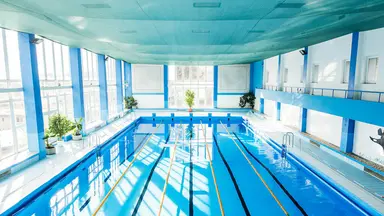
Why is ventilation so important?
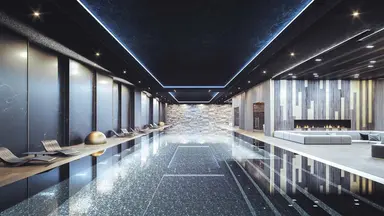
Meet the latest addition to Dantherm’s market-leading range of swimming pool air handling units.
Need help with choosing the right solution? Our team of over 100 climate control experts can assist.
You can also reach out or join the discussion on our Social Media. Check out our LinkedIn page.




